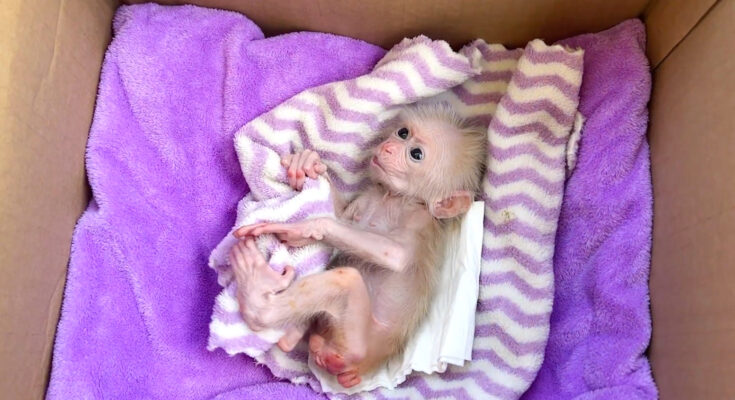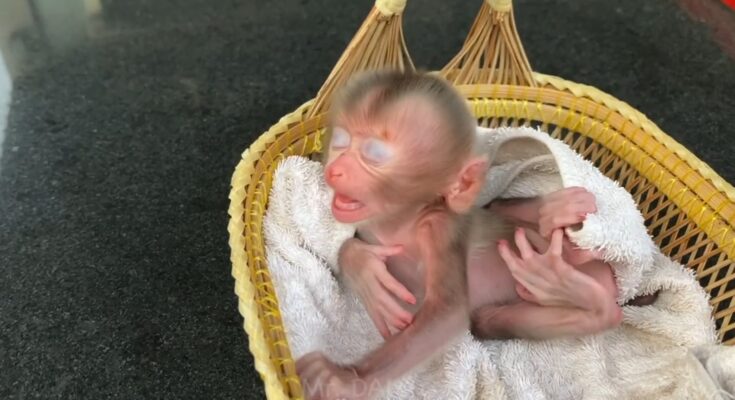Monkeys are some of the most intriguing and intelligent creatures on the planet. From their unique behaviors to their diverse habitats, they continue to captivate scientists and animal lovers alike. Here are ten fascinating facts about monkeys that you may not know:
1. Monkeys Use Tools
Some monkey species, like capuchins, have been observed using sticks to extract insects from tree bark or using stones to crack open nuts. This demonstrates their high level of intelligence and problem-solving skills.
2. They Have Unique Fingerprints
Just like humans, monkeys have distinct fingerprints that can be used for identification. This trait is particularly useful in studying their behavior and movements in the wild.
3. There Are Over 260 Monkey Species
Monkeys are divided into two major groups: Old World monkeys (found in Africa and Asia) and New World monkeys (found in Central and South America). Each species has its own unique adaptations and characteristics.
4. Some Monkeys Can Swim
While most monkeys prefer to stay in trees, some species, like the proboscis monkey, are excellent swimmers. They use their webbed fingers and toes to move efficiently through the water.
5. They Have Complex Social Structures
Monkeys live in social groups that have distinct hierarchies. These groups help in protecting members from predators and allow for cooperative hunting and food sharing.
6. Monkeys Communicate With Facial Expressions
In addition to vocalizations, monkeys use a wide range of facial expressions to communicate emotions such as fear, aggression, and contentment. This helps maintain social harmony within their groups.
7. Some Monkeys Can Recognize Themselves in Mirrors
Self-recognition is considered a sign of intelligence, and some monkeys, such as rhesus macaques, have been known to recognize their own reflections in mirrors.
8. Monkeys Play an Important Role in Ecosystems
Monkeys help maintain the balance of their ecosystems by dispersing seeds from the fruits they eat. This natural process aids in forest regeneration and biodiversity.
9. Some Monkeys Have Prehensile Tails
New World monkeys, like spider monkeys, have prehensile tails that act as an extra limb, allowing them to grasp branches and navigate through dense forests with ease.
10. Monkeys Show Affection and Empathy
Monkeys are known for their strong social bonds. They groom each other not just for hygiene, but also as a way to build trust and show affection.
Conclusion
Monkeys are truly fascinating creatures with complex behaviors and essential roles in their ecosystems. By understanding more about them, we can appreciate their intelligence and contribute to their conservation efforts.
This Baby Monkey’s First Steps Will Melt Your Heart

Discover Essential Tips for Raising a Newborn Baby Monkey! 🐒✨ From bonding basics to health care, learn how to give your baby monkey the best start. Dive into the world of primate parenting and uncover expert advice on nutrition, safe handling, and creating a nurturing environment. Whether you’re a first-time caregiver or an animal enthusiast, these tips will help ensure your little one’s growth and happiness. Start your journey with confidence!
There’s something universally heartwarming about watching a baby take its first steps — and when that baby is a tiny, wide-eyed monkey, it’s pure magic. In this post, we’re going to share a special moment that has melted hearts all over the internet: a baby monkey learning to walk for the very first time.
🐒 Born Into a Loving Troop
Baby monkeys are born into close-knit groups called troops, where family bonds are strong and caring for young ones is a shared responsibility. From birth, the infant clings to its mother’s belly, feeling the rhythm of her heartbeat and the warmth of her fur.
In those early weeks, the baby is completely dependent on its mother — not just for protection, but also for food and comfort.
🍼 How Baby Monkeys Are Fed in the Family
Feeding begins immediately after birth. The mother nurses her baby several times a day with rich, nutritious milk that helps build strength and immunity. This milk is the baby’s only source of nutrition for the first few months of life.
But the care doesn’t stop with the mother. In many monkey species, other female members of the troop — often called “aunties” — will help carry, groom, and even hold the baby. This behavior, known as alloparenting, creates a supportive environment where the baby is surrounded by constant love and attention.
As the baby grows, it begins to show interest in solid food by watching its mother and other adults. It may reach out to grab small pieces of fruit or leaves. This is how young monkeys learn to eat by imitation, slowly transitioning from milk to the natural foods found in their environment.
👣 The First Steps: A Moment of Courage
After weeks of clinging to its mother and crawling cautiously, the baby monkey begins to experiment with standing. One day, with a bit of courage and encouragement from its mother nearby, it lets go — and takes its first wobbly steps.
The troop may pause, quietly watching. The baby stumbles, regains balance, and keeps going. It’s a powerful moment of independence, even if it only lasts a few seconds. These first steps are a symbol of growth, bravery, and the strength of nurturing care.
❤️ A Glimpse Into the Emotional World of Monkeys
This small step is more than just movement — it’s a sign of how monkeys, like humans, grow through love, learning, and social support. From feeding to walking, baby monkeys develop by observing and being guided by their families.
It also reminds us that monkeys are not just intelligent — they are emotional, social, and deeply connected creatures. Their relationships mirror our own in many ways.
🎥 Shared Around the World
Moments like these are often captured in sanctuaries or natural reserves and shared with millions online. Viewers around the world react with joy and awe, often commenting:
- “So pure and sweet.”
- “This baby monkey is just like a toddler!”
- “Nature is beautiful.”
🌍 Why It Matters
Baby monkeys face many threats — from habitat loss to illegal pet trade. Many are rescued by wildlife organizations and cared for in sanctuaries where they can safely grow, learn, and one day return to the wild.
These emotional milestones remind us how important it is to protect these animals and their families.


